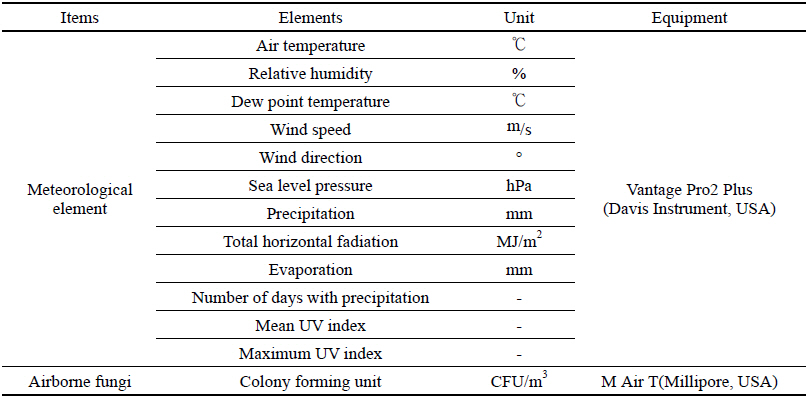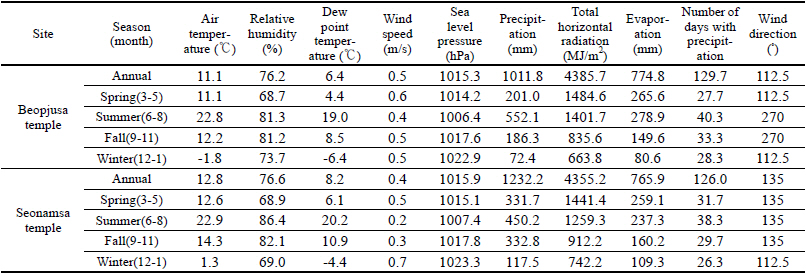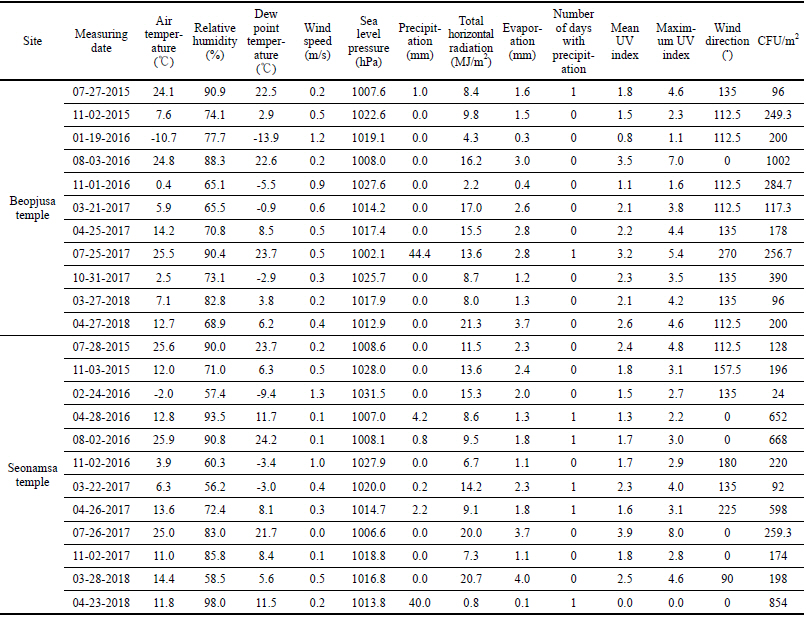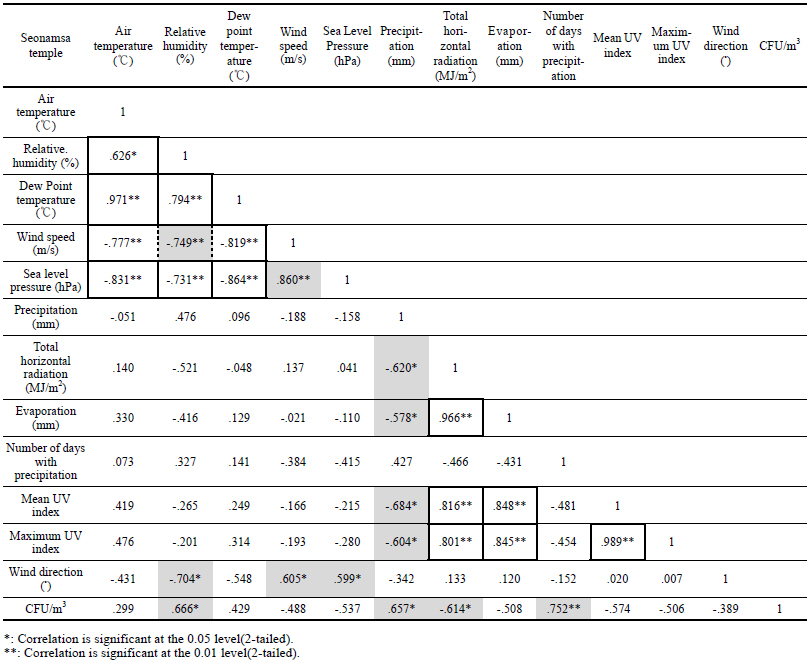INTRODUCTION
METHODS
2.1 Monitoring sites
Figure 1.
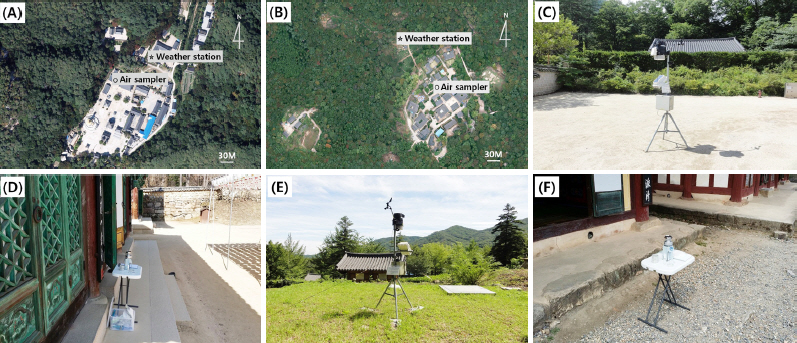
2.2 Measurement of meteorological elements
2.3 Sampling of airborne fungi
2.4 Correlation analysis
RESULTS
3.1 Monitoring local meteorological elements and the concentration of airborne fungi
3.2 Correlation analysis between local meteorological elements and the concentration of airborne fungi
DISCUSSION AND CONCLUSION
Beopjusa temple exhibits higher values for wind speed, total horizontal radiation, evaporation, and number of days with precipitation, while Seonamsa temple exhibits higher values for air temperature, relative humidity, dew point temperature, sea level pressure, precipitation, and concentration of airborne fungi. The higher concentration of airborne fungi was correlated with higher precipitation. The highest concentrations were observed in summer, followed by fall, in Beopjusa temple, whereas in Seonamsa temple, the highest concentrations were observed in spring, followed by summer.
Pearson correlation between meteorological elements and the concentration of airborne fungi showed that, for Beopjusa temple, no linear correlation was observed between the concentration of airborne fungi and meteorological elements, while for Seonamsa temple, the concentration of airborne fungi had strong correlations with number of days with precipitation, relative humidity, precipitation, and total horizontal radiation. Furthermore, the correlations were differentiated according to the common characteristics of the Beopjusa and Seonamsa temples, where they shared correlations unaffected by topographical conditions, and the individual characteristics, where the two temples had independent correlations under the influence of their unique topographical conditions.




